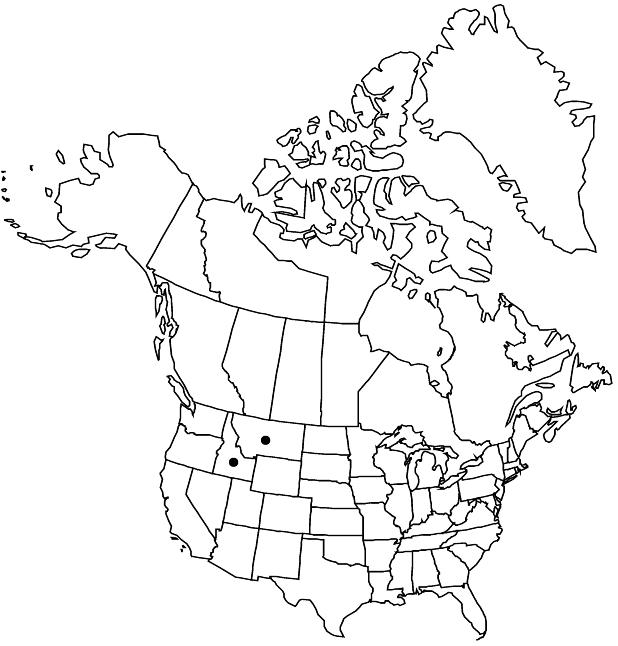Primula alcalina
Brittonia 36: 59, fig. 2. 1984 ,.
Plants 6.5–24 cm, herbaceous; rhizomes thin, relatively short; rosettes not clumped; vegetative parts farinose when young, often efarinose in age. Leaves not aromatic, indistinctly petiolate; petiole winged; blade without deep reticulate veins abaxially, elliptic to oblanceolate, 1–4 × 1 cm, thin, margins usually crenulate or denticulate, rarely entire, apex obtuse, surfaces glabrous, often farinose when young, efarinose in age. Inflorescences 3–10-flowered; involucral bracts plane, ± equal. Pedicels erect at anthesis, relatively thin, to 5 mm, length to 1 times bracts, stiff. Flowers heterostylous; calyx green with purple stripes, campanulate, 4–6 mm; corolla white, tube 4–7 mm, length 1–1.2 times calyx, eglandular, limb 6–10 mm diam., lobes 3–5 mm, apex deeply notched. Capsules ellipsoid, length 1–1.3 times calyx. Seeds without flanged edges, reticulate. 2n = 18.
Phenology: Flowering summer.
Habitat: Wet alkaline meadows
Elevation: 2000 m
Discussion
Of conservation concern.
Primula alcalina is only known from Idaho west of the Lemhi Range and nearby southwestern Montana. Although historical records from Montana were known, this species was believed extirpated until relocated in 2002.
Selected References
None.
